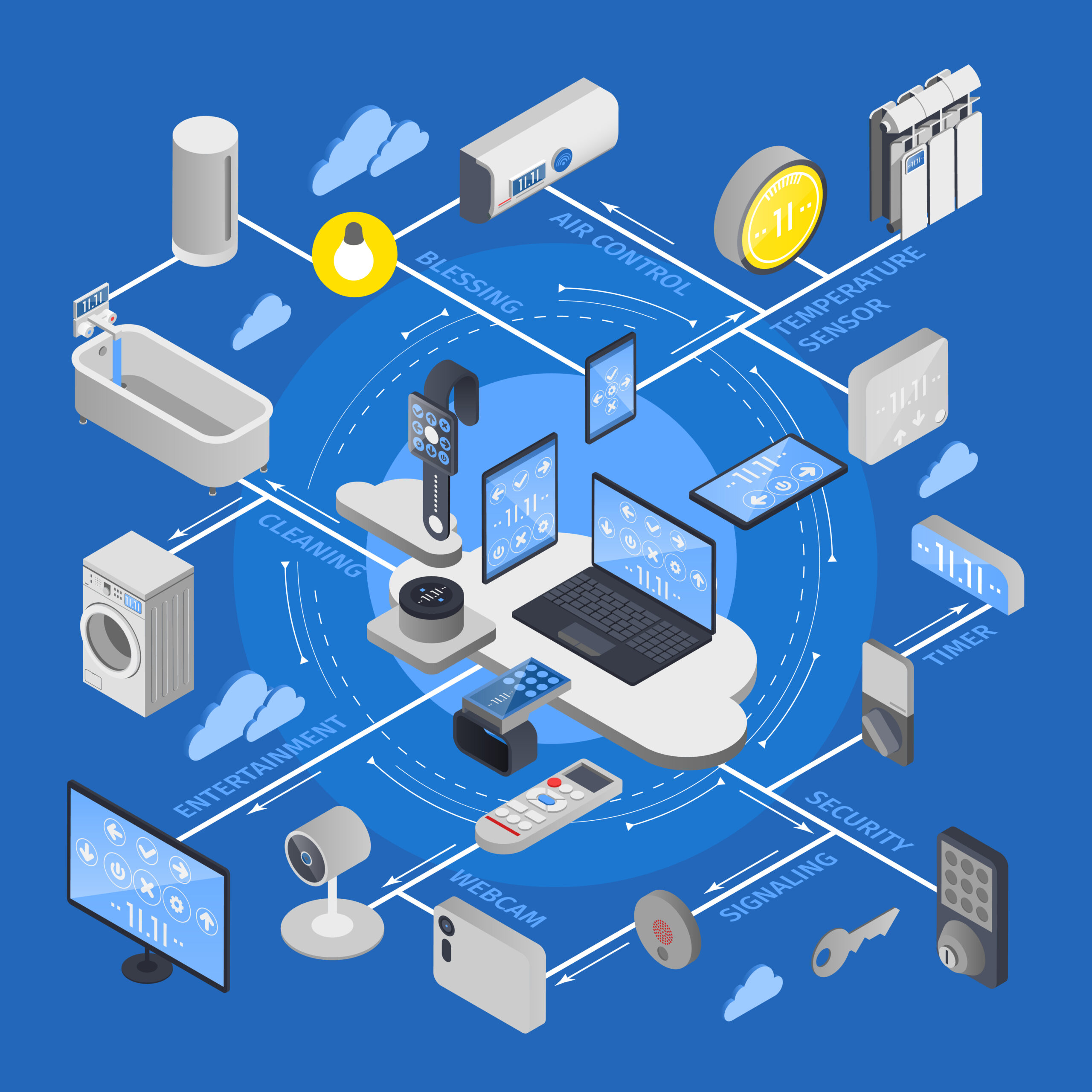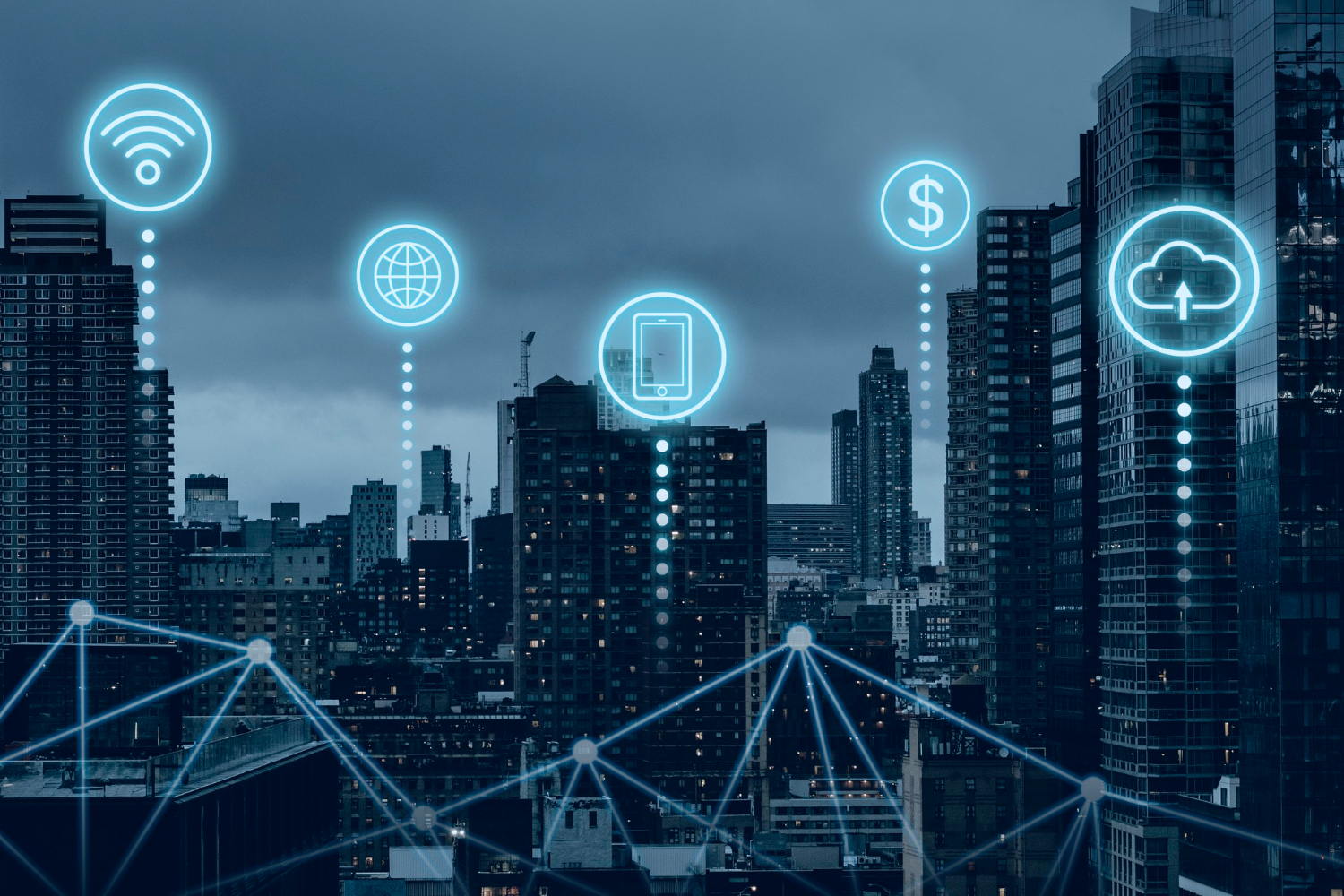In the rapidly evolving world of technology, the Internet of Things (IoT) stands out as a groundbreaking innovation. IoT devices are embedded in various aspects of our daily lives, from smart homes and wearables to industrial automation and healthcare. The usability of these devices heavily relies on the quality of their interfaces, which is where web development plays a crucial role. Effective web interfaces can significantly enhance the user experience, making it easier to control, monitor, and interact with IoT devices. This article explores how web development enhances IoT usability and offers tips for building effective interfaces.

The Intersection of Web Development and IoT
Web development and IoT are two technological realms that, when combined, create powerful and user-friendly applications. The core of this synergy lies in the creation of intuitive web interfaces that allow users to interact seamlessly with IoT devices. Here’s how web development contributes to IoT usability:
User-Friendly Interfaces
One of the main goals of web development is to create user-friendly interfaces. When applied to IoT, this involves designing dashboards and control panels that are intuitive, responsive, and accessible from any device. Web developers focus on user experience (UX) design principles to ensure that users can easily navigate and operate their IoT devices.
Real-Time Data Visualization
IoT devices generate vast amounts of data that need to be presented in a comprehensible manner. Web development technologies, such as HTML5, CSS3, and JavaScript frameworks like React and Angular, enable the creation of dynamic and interactive data visualizations. These visualizations help users understand complex data through graphs, charts, and real-time updates.
Cross-Platform Compatibility
Web interfaces can be accessed from various devices, including smartphones, tablets, and desktops. This cross-platform compatibility is essential for IoT applications, as it ensures that users can control and monitor their devices from anywhere at any time. Web development practices, such as responsive design and progressive web apps (PWAs), play a vital role in achieving this compatibility.
Integration with Cloud Services
IoT devices often rely on cloud services for data storage, processing, and analytics. Web development facilitates the integration of these cloud services, enabling seamless data exchange between IoT devices and cloud platforms. APIs (Application Programming Interfaces) are commonly used to connect web interfaces with cloud services, providing users with real-time insights and control over their IoT devices.
Tips for Building Effective IoT Web Interfaces
Creating effective web interfaces for IoT devices requires careful planning and execution. Here are some tips to guide web developers and businesses in building user-friendly and efficient IoT interfaces:
1. Understand User Needs and Context
Before designing an interface, it’s crucial to understand the users’ needs and the context in which they will interact with the IoT device. Conduct user research to gather insights into their preferences, pain points, and usage scenarios. This information will inform the design process, ensuring that the interface meets user expectations and enhances their experience.
2. Prioritize Simplicity and Clarity
IoT interfaces should prioritize simplicity and clarity to ensure ease of use. Avoid cluttering the interface with unnecessary elements and focus on presenting essential information and controls. Use clear labels, icons, and tooltips to guide users and make interactions straightforward.
3. Implement Responsive Design
Given the variety of devices used to access IoT interfaces, implementing responsive design is essential. Ensure that the interface adapts seamlessly to different screen sizes and orientations. Use flexible grids, scalable images, and CSS media queries to create a consistent and user-friendly experience across all devices.
4. Use Real-Time Data Updates
Real-time data updates are crucial for IoT interfaces, as they provide users with the latest information about their devices. Implement technologies like WebSockets or server-sent events (SSE) to push real-time updates to the web interface. This ensures that users have access to accurate and up-to-date data at all times.
5. Enhance Data Visualization
Effective data visualization is key to making IoT data comprehensible and actionable. Use charts, graphs, and other visual elements to present data in a visually appealing and easily digestible format. Libraries such as D3.js, Chart.js, and Highcharts can help create dynamic and interactive visualizations.
6. Ensure Security and Privacy
Security is a major concern in IoT applications, given the sensitive nature of the data involved. Implement robust security measures to protect user data and ensure the integrity of the IoT system. Use HTTPS for secure communication, implement authentication and authorization mechanisms, and regularly update the interface to address potential vulnerabilities.
7. Provide Customization Options
Allow users to customize their interface based on their preferences and needs. Customization options, such as dashboard layouts, themes, and notification settings, empower users to tailor the interface to their specific requirements. This enhances user satisfaction and engagement.
8. Incorporate Voice and Gesture Controls
Voice and gesture controls can significantly enhance the usability of IoT interfaces, especially for users with accessibility needs. Integrate voice assistants like Amazon Alexa or Google Assistant, and use gesture recognition technologies to provide alternative interaction methods. This makes the interface more versatile and inclusive.
9. Leverage Progressive Web Apps (PWAs)
Progressive Web Apps (PWAs) combine the best of web and mobile apps, providing a fast, reliable, and engaging user experience. PWAs work offline, load quickly, and offer native app-like features, such as push notifications and home screen icons. They are particularly useful for IoT interfaces, ensuring seamless access regardless of network conditions.
10. Collaborate with Web Development Agencies
Collaborating with experienced web development companies and agencies can be a game-changer for businesses looking to create effective IoT interfaces. Agencies like Sitemile, specialize in IoT and web development, offering expertise in creating user-centric and technically robust interfaces. They provide affordable pricing and tailored solutions to meet the specific needs of IoT projects.
Web Development Companies and Agencies Enhancing IoT Usability
Numerous web development companies and agencies excel in creating effective IoT interfaces. These firms bring specialized knowledge and experience to the table, ensuring that IoT projects are successful and user-friendly. Here are some notable companies and agencies:
Sitemile Custom Web Development
Sitemile Web Development is a leading web development company known for its innovative solutions in IoT. They offer comprehensive services, from user research and UX design to development and deployment. XYZ Web Development focuses on creating intuitive and responsive interfaces that enhance IoT usability.
And since they have a solid team of web developers they can take upon any project that involves custom web development and finish and build it with flying colors. From nodejs, to java, to C++ or python, or even linux programming, they can deal with any kind of requirement.
Affordable Pricing for IoT Web Development
Cost is a critical factor for businesses considering IoT web development. Many web development agencies offer affordable pricing models tailored to the specific needs and budgets of their clients. Here are some common pricing options:
Fixed-Price Projects
Fixed-price projects are ideal for businesses with well-defined requirements and a clear scope of work. The web development agency provides a detailed quote based on the project specifications, ensuring transparency and budget control. This model is suitable for small to medium-sized IoT projects.
Hourly Rates
Hourly rates are suitable for projects with evolving requirements or those needing continuous updates and maintenance. The agency charges based on the number of hours worked, providing flexibility and scalability. This model is ideal for complex and long-term IoT projects.
Retainer Agreements
Retainer agreements involve a fixed monthly fee for ongoing web development services. This model provides businesses with consistent support and maintenance, ensuring that their IoT interfaces remain up-to-date and functional. Retainer agreements are beneficial for businesses requiring continuous improvements and feature enhancements.
Custom Pricing Plans
Many web development agencies offer custom pricing plans tailored to the specific needs and budgets of their clients. These plans provide flexibility and ensure that businesses receive the best value for their investment. Custom pricing plans are suitable for businesses with unique requirements and those looking for a personalized approach.
Conclusion
Web development plays a pivotal role in enhancing the usability of IoT devices. By creating intuitive, responsive, and secure web interfaces, developers ensure that users can easily interact with and control their IoT devices. Understanding user needs, prioritizing simplicity, implementing real-time updates, and leveraging modern web technologies are essential for building effective IoT interfaces. Collaborating with experienced web development companies and agencies can further enhance the success of IoT projects, providing affordable and tailored solutions. As IoT continues to evolve, the synergy between web development and IoT will remain crucial, driving innovation and improving user experiences across various sectors.



Leave a Reply